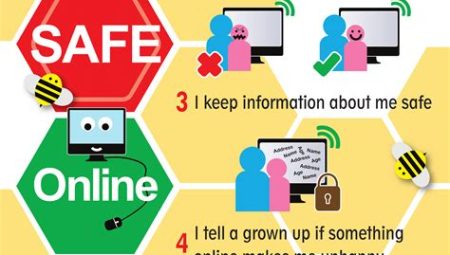In today’s digital age, our online presence is more important than ever. From potential employers to new connections, people are quick to turn to social media to get a sense of who we are. This is why understanding and actively managing our digital footprint is crucial. In this blog post, we will explore the concept of digital footprints and their impact on our personal and professional lives. We will delve into the strategies for creating a positive online reputation and building a personal brand on social media. Additionally, we will discuss the importance of managing privacy settings for a safer digital presence and using social media platforms strategically. We will also touch on the significance of engaging with followers and creating a community, as well as monitoring and responding to online feedback. Finally, we’ll explore how to balance personal and professional accounts, optimize social media profiles for visibility, and take control of our digital footprint through helpful tips and tools. Join us as we navigate the world of social media and learn how to build a positive online presence.
Table of Contents
Understanding digital footprints and their impact
Digital footprints are the traces and tracks we leave online as we navigate the internet. These footprints can include social media posts, comments, likes, shares, browsing history, and any other online activity that leaves a record. It’s important to understand the impact of these digital footprints because they can have far-reaching consequences, both personally and professionally.
Our digital footprint can affect our online reputation, privacy, and even our future opportunities. Potential employers, college admissions officers, and even future romantic partners may research our digital footprints to learn more about us. Therefore, it’s crucial to be mindful of the content we create and the information we share online.
Furthermore, digital footprints can also impact our data security and privacy. Every interaction we have online leaves a trail of data that can be collected and used by third parties. This data can be used for targeted advertising, identity theft, or other malicious purposes. Understanding the implications of our digital footprints can help us take steps to protect our privacy and data.
By understanding the concept of digital footprints and being mindful of our online behavior, we can better manage our online presence and mitigate any potential negative impacts. It’s important to remember that our digital footprints are a reflection of who we are and can have lasting effects, so being aware of their impact is crucial in today’s digital age.
Creating a personal brand on social media
In today’s digital age, social media has become a powerful tool for individuals to establish a personal brand and showcase their unique strengths and talents. Whether you’re a freelancer, entrepreneur, or simply looking to stand out in your industry, building a strong personal brand on social media can open doors to new opportunities and connections.
One of the key components of creating a personal brand on social media is to define your niche and target audience. Identify what sets you apart from others in your field and who you want to connect with. This will help you tailor your content and messaging to resonate with your desired audience.
Consistency is essential when it comes to building a personal brand. Ensure that your online presence reflects the image you want to portray to the world. This means maintaining a cohesive visual identity, using a consistent tone of voice, and adhering to a regular posting schedule.
Engagement is another critical aspect of creating a personal brand on social media. Make an effort to interact with your followers, respond to comments, and participate in conversations within your industry. Building a loyal community around your personal brand can help increase your visibility and credibility online.
Building a positive online reputation
Building a positive online reputation is essential for both individuals and businesses in today’s digital age. With the prevalence of social media and online reviews, our online presence can significantly impact our personal and professional lives. Therefore, it is crucial to manage our online reputation effectively to enhance our credibility and trustworthiness.
One of the key ways to build a positive online reputation is by maintaining a consistent and professional presence on social media platforms. This involves creating and curating high-quality content that reflects our values and expertise. Additionally, engaging with followers and responding to feedback in a timely and respectful manner can help build a positive online image and foster a sense of community around our personal or professional brand.
Another important aspect of building a positive online reputation is monitoring and managing our online presence. This includes regularly checking for any negative reviews or unfavorable content that may damage our reputation. By addressing and resolving issues promptly and professionally, we can demonstrate our commitment to customer satisfaction and maintain a positive online image.
Ultimately, building a positive online reputation requires consistency, authenticity, and diligence in managing our digital footprint. By taking proactive steps to optimize our online presence and engaging with our audience in a meaningful way, we can enhance our reputation and establish a trusted and respected online presence.
Managing privacy settings for a safer digital presence
Privacy settings are an important aspect of maintaining a safe and secure digital presence. In today’s digital age, where much of our personal information is stored and shared online, it’s crucial to take proactive steps to protect our privacy. By managing our privacy settings on various platforms and devices, we can minimize the risk of identity theft and cybersecurity threats.
One key step in managing privacy settings is to regularly review and update the settings on our social media accounts. This includes adjusting who can see our posts, personal information, and contact details. By restricting the visibility of our content to only trusted friends and connections, we can reduce the likelihood of unwanted access to our personal information.
In addition to social media, it’s important to manage privacy settings on other online platforms such as banking and shopping websites. Ensuring that our financial and personal details are protected with strong passwords and multi-factor authentication can help safeguard our sensitive information from falling into the wrong hands.
Ultimately, by being proactive in managing privacy settings, we can create a safer and more secure digital presence for ourselves, minimizing the risks associated with online exposure.
Using social media platforms strategically
In today’s digital age, social media platforms have become essential tools for individuals and businesses to connect with their audience. It is crucial to strategically use these platforms to maximize their potential and achieve the desired outcomes.
First and foremost, it is important to identify the target audience and the purpose of using social media. Whether it is for personal branding, promoting a business, or sharing valuable content, understanding the goals will help in strategic planning.
Furthermore, choosing the right platforms is crucial for strategic use. Each social media platform has its unique features, demographics, and user behaviors. It is important to select the platforms that align with the target audience and the type of content being shared.
Additionally, creating a content calendar and posting schedule is essential for strategic use of social media platforms. Consistency and relevancy are key factors in engaging the audience and growing the following. It is important to analyze the best times to post and the type of content that resonates with the audience.
Engaging with followers and creating a community
Engaging with followers and creating a community
When it comes to building a strong presence on social media, one of the key factors is engaging with followers and creating a sense of community. It’s not enough to just post content and hope for the best – actively interacting with your audience is crucial for building lasting relationships and fostering a loyal following.
One of the best ways to engage with followers is by responding to their comments and messages. Whether it’s a simple thank you for a positive comment or a thoughtful reply to a question, taking the time to interact with your audience shows that you value their input and are invested in creating a two-way dialogue.
In addition to responding to individual comments, creating opportunities for community interaction can also help foster a sense of belonging among your followers. This can be done through hosting Q&A sessions, running polls or surveys, or even creating user-generated content campaigns that encourage your audience to participate and share their own experiences.
Ultimately, the goal of engaging with followers and creating a community is to build a loyal and active audience who not only consume your content but also feel part of a larger community. By prioritizing engagement and interaction, you can cultivate a dedicated following that is more likely to support your brand and share your content with others.
Monitoring and responding to online feedback
When it comes to maintaining a positive online reputation, monitoring and responding to online feedback is crucial. Your online reputation can have a significant impact on your personal and professional life, so it’s important to stay on top of any feedback or comments about you or your brand.
One of the first steps in monitoring online feedback is to set up alerts for your name or brand across different social media platforms and search engines. This will allow you to stay informed about any mentions or reviews that are posted online, giving you the opportunity to respond in a timely manner.
Responding to online feedback is equally important as monitoring it. Whether the feedback is positive or negative, taking the time to acknowledge and respond to it shows that you are engaged and value the opinions of your audience. When responding to negative feedback, it’s important to remain professional and address the issue with empathy and a solution-oriented mindset.
By actively monitoring and responding to online feedback, you can build trust and credibility with your audience, and demonstrate that you are proactive in managing your online reputation. This can lead to stronger relationships with your followers and potentially turn a negative situation into a positive one.
Balancing personal and professional accounts
Balancing personal and professional accounts
When it comes to maintaining a presence on social media, it’s important to find a balance between your personal and professional accounts. Digital footprints have become a significant aspect of our lives, and managing them effectively can be the key to success in the digital world. Balancing personal and professional accounts is crucial in order to maintain a positive online reputation and ensure that your social media presence accurately reflects your personal and professional brand.
It’s important to establish clear boundaries between your personal and professional accounts. This means keeping personal content, such as updates about your family or personal life, on your personal accounts, while keeping professional content, such as updates about your work or industry, on your professional accounts. This can help to create a clear distinction between the two, allowing you to maintain a professional image while still engaging with your friends and family on a personal level.
Another key aspect of balancing personal and professional accounts is managing privacy settings. Social media platforms offer a range of privacy settings that can help you control who sees your content. By utilizing these settings effectively, you can ensure that your personal and professional content is seen by the intended audience, while keeping private information secure. This can help to minimize the risk of personal content affecting your professional image and vice versa.
Finally, it’s important to regularly review your online feedback and engagement across your personal and professional accounts. This can help you stay informed about how your content is being received and allow you to make adjustments as needed. Balancing personal and professional accounts requires ongoing attention and effort, but by managing your digital footprint effectively, you can ensure that both aspects of your online presence work together to reflect your personal brand in a positive light.
Optimizing social media profiles for visibility
When it comes to optimizing your social media profiles for visibility, there are several key strategies to keep in mind. First and foremost, it’s important to ensure that your profile is complete and up to date. This means including a clear and professional profile picture, a detailed bio, and any relevant links or contact information.
Next, consider the use of keywords throughout your profile to improve searchability. Incorporating relevant keywords into your profile description, headline, and any other applicable sections can help ensure that your profile appears in relevant searches.
Additionally, take advantage of any features that allow you to showcase your work or expertise, such as a portfolio section or featured projects. This can help provide visitors with a better understanding of who you are and what you have to offer.
Lastly, be sure to engage with your audience regularly and encourage them to interact with your content. The more engagement your profile receives, the more likely it is to appear in others’ feeds and gain visibility.
Taking control of your digital footprint: tips and tools
In today’s digital age, it’s more important than ever to be aware of the digital footprint we leave behind. Whether we realize it or not, our online activities can have a significant impact on our personal and professional lives. However, with the right tools and tips, we can take control of our digital footprint and ensure that it reflects the image we want to portray.
One of the first steps in managing your digital footprint is to audit your online presence. This involves conducting a thorough review of your social media profiles, blog posts, comments, and any other content that may be associated with your name. By identifying any potentially harmful or outdated information, you can take steps to clean up your digital footprint and present a more polished image.
In addition to cleaning up your existing online content, it’s important to be mindful of what you share in the future. This means being selective about the type of content you post, as well as reviewing your privacy settings on various platforms. By adjusting your privacy settings, you can control who has access to your personal information, photos, and posts, thereby reducing the risk of sharing sensitive information with the wrong audience.
Another key aspect of managing your digital footprint is to monitor your online presence regularly. This involves setting up alerts for your name and monitoring any mentions or tags on social media. By staying informed about what is being said about you online, you can quickly address any negative feedback or misinformation, and take steps to minimize its impact on your digital footprint.






